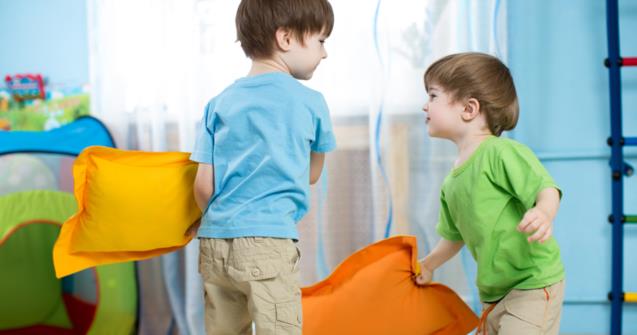
When a child hits his early childhood educator
Aggressive behavior, tantrums, and children who hit their peers are common. Physical and verbal aggression is, in most cases, observed among children. A child may hit one of his peers to express his discontent, because he wants his toy, or even to establish contact. We have explored the subject in many articles.
However, as early childhood educators, we can sometimes be a child’s “target”, the one who is on the receiving end of a child’s hitting. In the heat of the moment, a child may, for several reasons, hit his early childhood educator to express his anger and frustration. Being slapped, kicked, or punched can come as a surprise, to say the least.
“Testing” their early childhood educator’s reaction is part of normal childhood development. Aggressive gestures must be addressed; an intervention is necessary to clearly send the message that this type of behavior is unacceptable. On the other hand, the scenario is somewhat different if a child repeatedly hits an adult to express his frustration or anger. The child must understand that hitting is not allowed and what’s more, that it will inevitably result in a negative consequence. Read on to discover how I recommend you intervene in this type of situation.
First, if a child hits you, you must immediately put a “stop” to his behavior. In fact, you must never let a child hit you. As soon as a child adopts this type of behavior, stop him and take him to an isolated area where he can think about his behavior. This will give him a few minutes to calm down. In general, it is recommended that a child remains in the “thinking corner” for one minute per year of life (if a child is three years old, he must stay there for three minutes). Nonetheless, if a child is still upset once the time is up, leave him in the corner for a few more minutes. Go to him as soon as he appears to be calm.
Put the child’s emotions into words. Hitting is often present when a child is extremely angry or frustrated and does not know how to express these emotions. Use words to describe the child’s feelings and normalize his emotions. However, avoid normalizing the act of hitting as you help the child understand that the emotions that led to his outburst were normal.
Once the child is calm, discuss the situation. Make sure you have calmed down too. Let’s be honest, being hit by a child may spark negative emotions on your end! Briefly summarize what happened using simple terms. Be sure to use observable and measurable facts. Suggest alternatives for the child’s behavior and work together to find other ways he may express his frustration. Encourage the child to “make up” for his unacceptable behavior (for example by hugging you) to help him slowly understand the impact of what he did.
In a situation like this, the consistency of your interventions will play an important role in reducing the frequency and the recurrence of the behavior. A child who hits his early childhood educator must quickly understand that hitting others is unacceptable, no matter how angry he is. Be sure to plan your intervention and apply it whenever necessary.
Good luck!

 Home
Home Theme activities
Theme activities
 Babies and toddlers
Babies and toddlers
 Arts and crafts
Arts and crafts
 Science
Science
 Creative recipes
Creative recipes
 Tips and tricks
Tips and tricks
 Special needs
Special needs
 Extra activities
Extra activities
 Educ-TV
Educ-TV
 Newsletter
Newsletter  Online store
Online store Educatall club
Educatall club

